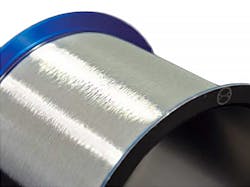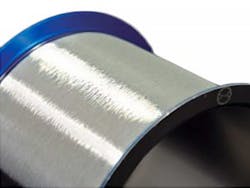TopLine offers bonding wire for universities, small-volume users
Irvine, CA. TopLine, a designer and manufacturer of semiconductor packages and PCB assemblies, has started a new service that makes it easy for universities, research facilities, laboratories, and small-volume users to obtain bonding wire manufactured by Tanaka. TopLine’s One Spool policy allows users to purchase a single spool of bonding-wire.
“Other manufacturers of bonding wire typically require customers to buy minimum order quantities, which might be 10 to 20 spools,” Martin Hart, TopLine’s president, stated. “But TopLine’s MOQ is just one spool. Our goal is to make it easy for small-volume customers to have quick, hassle-free access to Tanaka’s world-class quality bonding wire, helping universities, laboratories, and R&D projects to advance technology, and ultimately the industry that supports all of us.”
Examples of Tanaka bonding wire will be on display in the TopLine booth at the IPC Apex Expo 2017 trade show in San Diego February 14-16, 2017.
Bonding wire is used in a wide range of applications, mostly involving wiring silicon die inside IC packages or bonding chips directly to PC boards, known as chip on board (CoB). The wire is also used to build prototype packages as well as small scale production packages for today’s North American market.
TopLine offers a range of bonding wire in four alloys: gold, aluminum, silver, and copper, as well as flat gold ribbon used in RF/microwave and certain segments of the solar industry. TopLine offers standard lengths on spools: 50 m, 100 m, 300 m, 500 m, and 1000 m. Wire is packaged on two-inch spools as well as half-inch spools for industry-standard manual or automated bonding machines.
About the Author

Rick Nelson
Contributing Editor
Rick is currently Contributing Technical Editor. He was Executive Editor for EE in 2011-2018. Previously he served on several publications, including EDN and Vision Systems Design, and has received awards for signed editorials from the American Society of Business Publication Editors. He began as a design engineer at General Electric and Litton Industries and earned a BSEE degree from Penn State.

